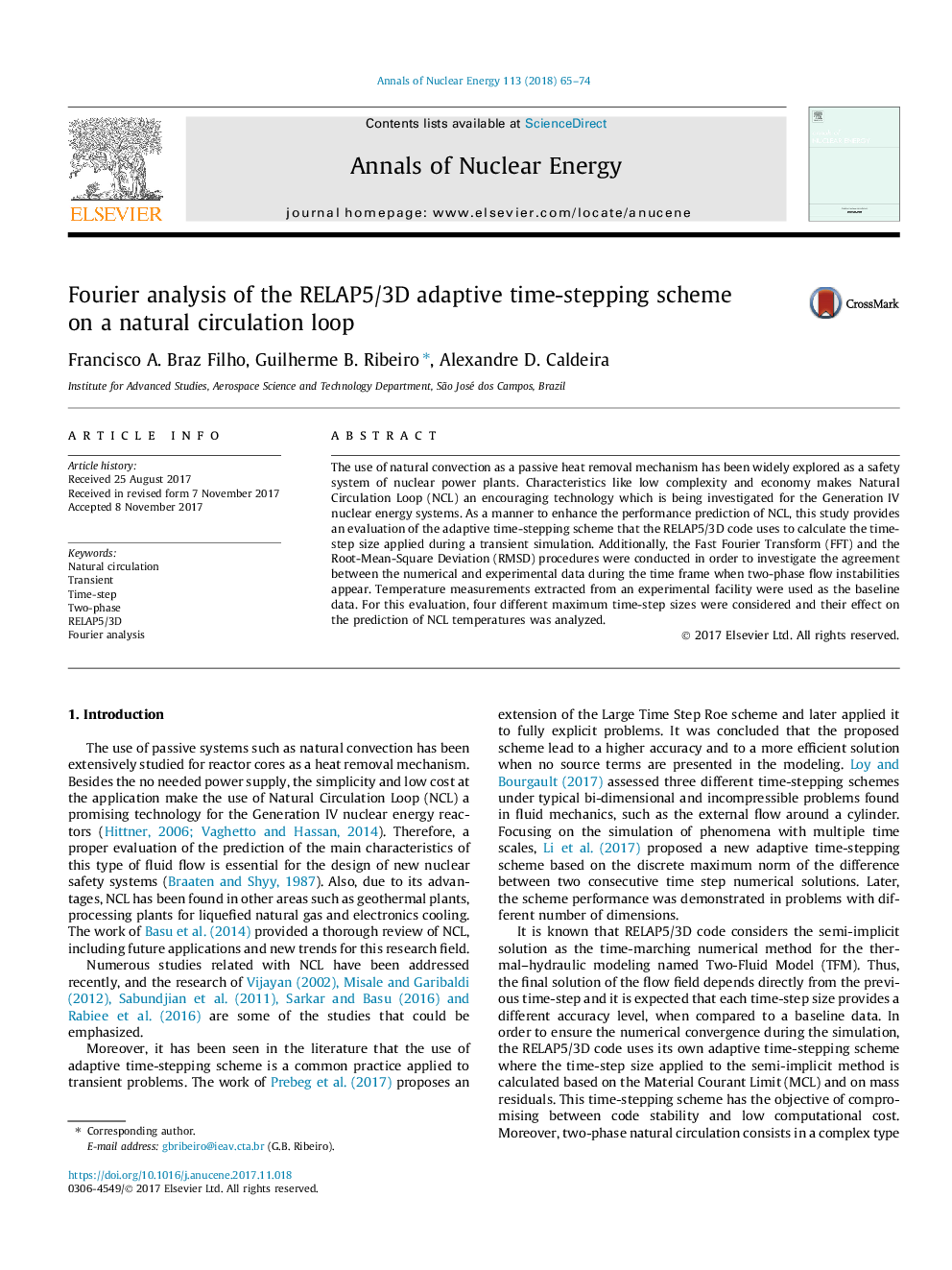| Article ID | Journal | Published Year | Pages | File Type |
|---|---|---|---|---|
| 8067167 | Annals of Nuclear Energy | 2018 | 10 Pages |
Abstract
The use of natural convection as a passive heat removal mechanism has been widely explored as a safety system of nuclear power plants. Characteristics like low complexity and economy makes Natural Circulation Loop (NCL) an encouraging technology which is being investigated for the Generation IV nuclear energy systems. As a manner to enhance the performance prediction of NCL, this study provides an evaluation of the adaptive time-stepping scheme that the RELAP5/3D code uses to calculate the time-step size applied during a transient simulation. Additionally, the Fast Fourier Transform (FFT) and the Root-Mean-Square Deviation (RMSD) procedures were conducted in order to investigate the agreement between the numerical and experimental data during the time frame when two-phase flow instabilities appear. Temperature measurements extracted from an experimental facility were used as the baseline data. For this evaluation, four different maximum time-step sizes were considered and their effect on the prediction of NCL temperatures was analyzed.
Related Topics
Physical Sciences and Engineering
Energy
Energy Engineering and Power Technology
Authors
Francisco A. Braz Filho, Guilherme B. Ribeiro, Alexandre D. Caldeira,
